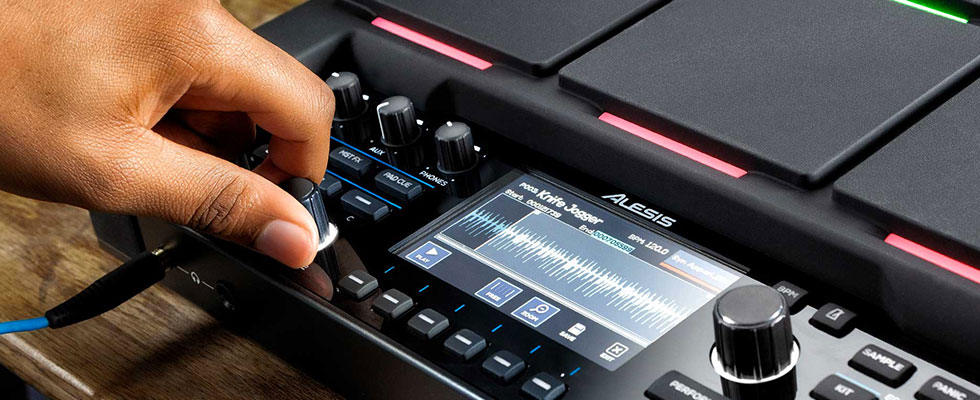Professional level modules such as the TD-50 are all-encompassing when it comes to sound creation. You can change everything from the size of a cymbal or drum to the imaginary placement of a mic on the kick drum. Or the ability to alter two different sounds produced when hitting the head of the drum or the rim, or the panning placement of each drum. Basically, your options are limitless.
All of your selections can be handled in the minutest of details with the likes of Roland, 2Box or Yamaha modules.

Percussion Pads
If you’re after even more control over sampling, DAW connectivity and sample selection, percussion pads are the answer. These make it extremely easy to make new samples and implement them into a live setup. Percussion pads are perfect for uploading samples and playing the sounds through the pads on the hardware. This frees up your kit for other sounds, be they acoustic or electric.
You hit the rubber pads with your sticks just as you would your drum kit. You can adjust all the settings through the software or by MIDI controller. The most ideal situation is to use a percussion pad for different or weird effects you’ve recorded. For example, say you want to play the sound of your cupboard closing, or something you said; hit the pad and it’ll play. You can make your setup extremely unique with this addition.
Brands like Alesis and Roland allow you to connect the pads with DAWs to start and stop tracks on the fly or augment a kit in detail using pedal inputs for kick and hi-hats. Check out our head to head article between the Alesis Strike MultiPad and Roland SPD-SX.

Drum Triggers
You might have an acoustic drum kit but want to open up your tonal options. Triggers are the best way to go, especially in this circumstance. They clip onto the rim of your drums and detect where and when you hit.
These connect to a module and produce the sound you’ve chosen when projected through an amp or PA system. You get the feel of your acoustic kit with the variation of an electronic kit. Live drummers from all musical styles like to use triggers to add more expressive sounds to the kit, like electronic beats or even craz non-drum effects. Metal players will use triggers to tighten up the sound and make it punchy.
If you enjoyed this read, check out more of our Learn articles!
Featured Gear
















Responses & Questions